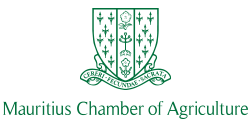Meat and Milk products
tonnes
hectares occupied by the deer sector
Tonnes
Self sufficiency level
Venison
With the gradual decline of the local cattle population, venison has become the main source of red meat. Most of the venison comes from some 60 production units, of which 50 produce venison on an extensive basis in chassees while the remaining are engaged in intensive deer farming. The total area occupied by the deer sector amounts to 25 000 ha of which 15 000 ha are privately owned land while the remaining of 10 000 ha are state forest lands. The local deer population is estimated at 70 000 heads of which 10 000 heads are reared on state lands and 60 000 on private lands (including a herd population of some 10 000 heads reared in intensive farms). Venison production is estimated to be around 500 tonnes annually.
Beef
Fresh beef supply, on the local market, is undertaken by a few small private companies together with the backyard farmers. The private companies import young animals which are fattened until slaughter while the small livestock farmers use mainly the male calves originating from the dairy sector. Local beef production (including animals from Rodrigues but excluding imported animals fattened for slaughter) has witnessed a drastic decline over the years from 450 t in 1990 to reach 72 t in 2005. The current level of self-sufficiency for this sector stands at a mere 2 percent.
Pork
Prior to the epizootic outbreak of African Swine Fever in 2007, the pig sector involved some 465 primary producers, a total herd of about 18 000 heads, some 25 registered butchers at the Roche Bois Central Abattoir and 4 processing plants. The primary breeders were mainly backyard, part-time producers that were scattered in the rural and coastal regions. Self sufficiency level was estimated to be 50 % in 2007. Government subsequently initiated a series of measures in order to give a fresh start to the sector, including the setting up of a National Pig Restructuring Committee with a view to recommend actions for rehabilitating and modernizing the whole industry. Local production of pork reached a mere 427 tonnes in 2009, representing a self sufficiency level of 25 %.
Goat
Over the years, the local goat population has witnessed a drastic decline due to marketing problems, in breeding, poor husbandry practices and lack of good quality fodder among others: In 2009, local production amounted to some 75 tonnes, representing only 1.5 % of annual consumption estimated at 5,000 tonnes.
litres of fresh milk
with completely mechanized units
The local dairy sector produces mainly milk for direct consumption. Production of fresh milk is quite limited and is estimated at 5 million litres of milk, representing 4 % of the total requirement of milk and milk products. The dairy sector has largely been characterized by traditional backyard producers who have been operating on a low input – low output system of production, that is in total confinement and stall-fed system under the cut-and-carry system whereby fodder is collected by roadsides, forests or marginal lands. Small-holder dairy farmers sell their milk mostly at farm gate directly to consumers and intermediaries. A few sell their milk to private companies, who then pasteurise the milk and sell it in milk pouches to shops and supermarkets. Since 2008, two major operators have entered the milk sector and set up completely mechanized units.
tonnes
million
operators
Layers
Mauritius is self-sufficient in chicken meat and eggs with annual production levels estimated at 47 500 t and 200 million units respectively. The filiere is structured as follows: 85% produced by four industrial farms; 10% by small commercial farms and 5% by family (backyard) producers. The private operators provide a package of incentives to interested small breeders such as chicks for contract growing and guaranteed market for final products. Egg production is undertaken by some 250 operators rearing around 950,000 layers. The small scale farmers rearing less than 5,000 layers account for around 15% of the total eggs produced. 65% of poultry meat produced is sold as frozen (whole carcasses and cuts) and the difference as fresh. Large producers mainly sell their produce to supermarkets, hotels and restaurants while the marketing side of small-scale production has remained traditional.
tonnes
animal feed firms
Production of animal feed is currently undertaken by two major commercial firms. A variety of feeds for the following classes of livestock are being produced: poultry (broiler & laying hens), cattle and dairy cows, pigs, goats, rabbits, ducks, dogs and primates. They cater for the local as well as for the regional markets.


